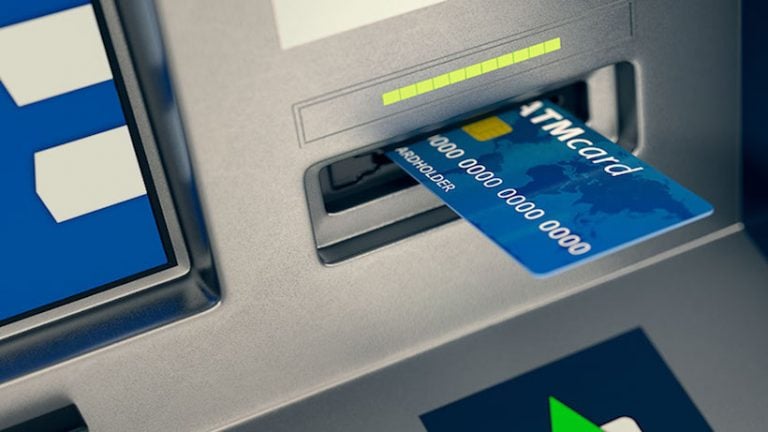Meaning : ATM is the automation of the Teller. An ATM is an electronic cash providing and accepting machine. These machines are installed to provide access to cash to the bank customers any time of the day. One need not worry about the working hours of the bank. It is a self service counter open 24 hours a day for 365 days of the year. A customer who wishes to avail of the ATM facility has to maintain certain minimum balance. There is maximum limit on withdrawal.
The customer is issued with the ATM card. It has a Personal Identification Number (PIN) which is known only to the customer. The customer first inserts the card in the slot. The machine examines the genuineness of the card and the door is opened automatically. After that, the customer presses the keys of his PIN and the required cash flows out. The ATM also accepts cheques and cash deposits. They may be installed at shopping centres, airports, railway stations or located within bank premises. The ATM requires currency notes which are not folded and can move easily in a machine. The ATM supplies notes of certain denominations only.
Facilities :
In the automated teller machine facility following points to be considered :
a) ATM Machine : ATM is terminal of the bank’s computer which can be operated by the customer himself for withdrawal, deposits of cash, balance enquiries, transfer of funds, statements of accounts round the clock.
b) Video Screen : The terminal is coupled with a video screen. It has also a cash dispenser which gives currency notes as per instruction of the computer.
c) ATM Card : The customer is supplied with an ATM card. It has MICR coding by which computer identifies the customer. Besides this, the customer is given his secret personal identification number (PIN). He can operate the computer by inserting the card in the slot of ATM window and then giving his identification number.
d) PIN : PIN is given by the computer while operating the account and even Bank staff does not know this number.
e) Terms and Conditions about Withdrawal : The ATM card provides the term and conditions of operation like maximum withdrawal per transaction per day, the maximum balance to be maintained, etc. compared with credit card, an ATM card is a debit card.
Advantages :
The advantages of automated teller machine services are as follows :
a) 24 Hours Availability : Service is available 24 hours a day and seven days a week.
b) Convenient Place : It can be placed in convenient off branch locations like shops, factories, offices.
c) Privacy of Operation : It ensures privacy of operation through self-service.
d) No Need of RBI’s Permission : Banks need not obtain RBI’s permission for installing ATMs in their branches/ extension counters.
e) No Time Limit for Transaction : One can do the transaction while going to office or while returning home or while going to shopping or on holidays. The choice of time is unlimited.
f) Quick and Efficient Service : automated teller machine offers quick and efficient service. It is professional service. Since the machine is programmed and many driven the customer knows how to operate the ATM in simple specified steps and no time is wasted.
g) Fixed Response to Customer : Response of automated teller machine to customer is fixed. The ways the transactions are to be carried out in logical steps are programmed. Further, the operation is to be carried out within specific time limit. If the customer does not respond within that time, the transaction is aborted. This time limit is pre-set by the bank
Limitations :
The limitations of ATM are as follows :
- a) Limitation on Withdrawals: Cash withdrawals for large amount are not permitted. It is restricted by the amount fixed for the card.
- b) Restriction on Cash Dispensations: Cash dispensations are generally restricted to certain denominations of currency. As such, withdrawals are to be made only in certain multiples.
- c) Limited Functioning: The automated teller machine performs only the limited functions. For other banking activities like credit limits, locker facilities, etc. the customer has to approach the bank in person or by other means.
Recommended Articles
